Create
Vintage St. Pete: The Manhattan Casino
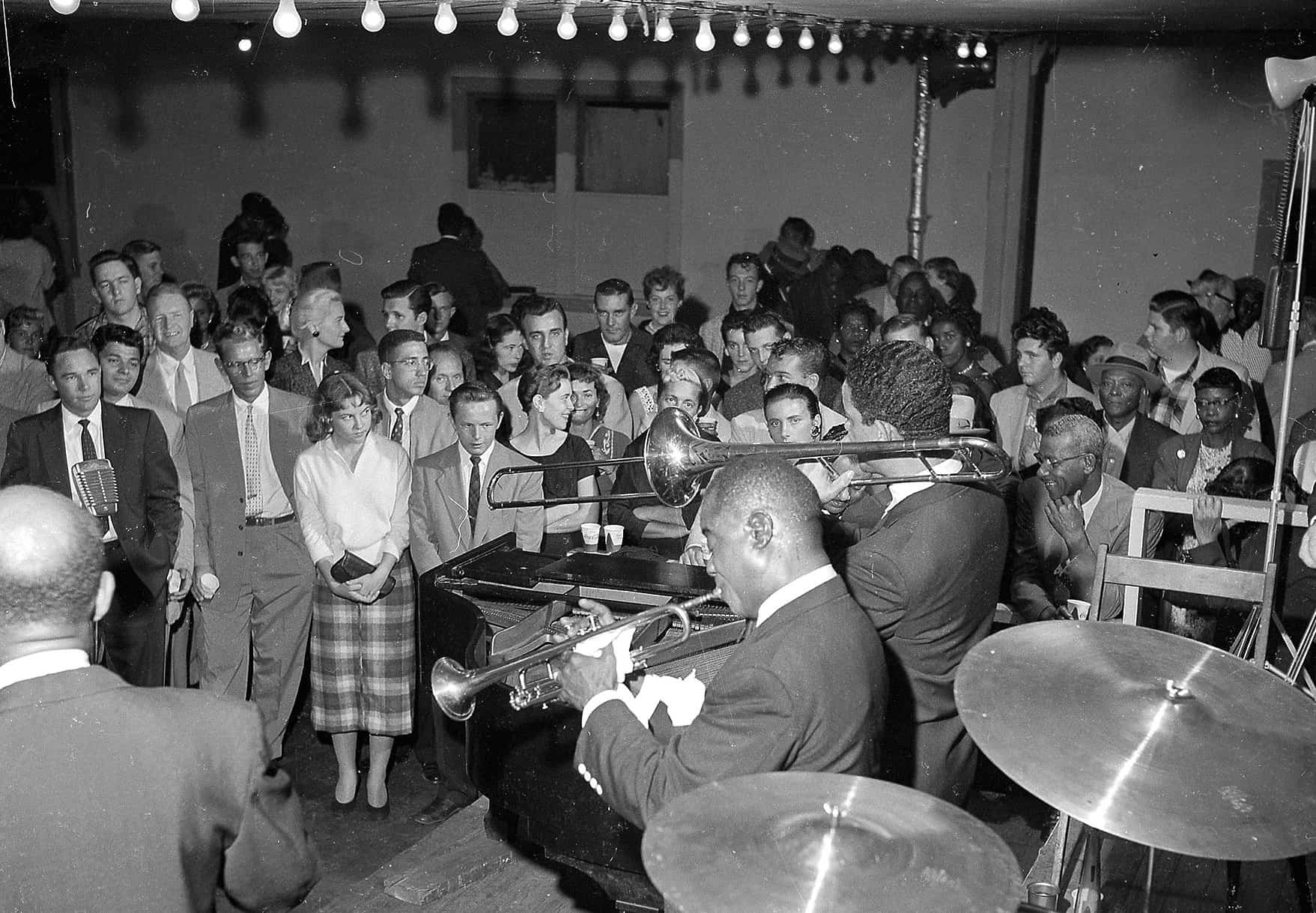
GRAND FORKS, N.D. – Trumpet player Louis (Satchmo) Armstrong said yesterday he’s given up plans for a government-sponsored trip to Russia because “The way they are treating my people in the South, the government can go to hell … it’s getting almost so bad, a colored man hasn’t got any country.”
Associated Press/Sept. 19, 1957
Louis Armstrong was on one wild ride in 1957. Arguably the best-known jazz musician in America, he was playing to packed houses, and in the Jim Crow South – where the audiences were almost always segregated – he’d endured death threats, and bomb threats, and one day in January several sticks of dynamite exploded outside a Knoxville auditorium while he was onstage with his combo. No one was injured, and Armstrong kept the 3,000-strong crowd’s spirit up by quipping “That sounded like a drunk falling out of the balcony.” And then he played another tune.
But the whole lamentable situation bugged him.
White, middle class America had the affable trumpeter in its focus because of his co-starring appearance alongside Frank Sinatra, Bing Crosby and Grace Kelly in High Society, one of the biggest box office hits of 1956. He was selling records by the millions. He played Carnegie Hall. He toured the world. The U.S. State Department crowned him its International Jazz Ambassador.
But Armstrong made his bones playing the so-called Chitlin’ Circuit, a loosely-connected network of Black nightclubs and tiny performance venues in the South. African American entertainers found steady work on the circuit, pulling one-nighters in embattled, segregated times. He had long since graduated to the “big leagues.”
In February 1957, a few weeks after the explosion in Tennessee, Armstrong brought his band to the Manhattan Casino, a 6,000-square foot dancing hall on St. Petersburg’s South Side. The Manhattan was a regular stop on the Chitlin’ Circuit, and hundreds of performing musicians appeared there between the post-Depression ‘30s and 1968, when it closed for good.
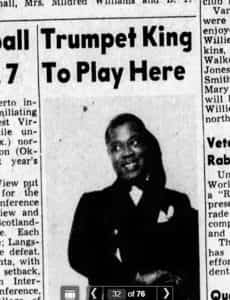
December 1940
He’d performed there twice in the 1940s. By 1957, Louis Armstrong was, arguably, too big to play a gig at the Manhattan Casino, which could barely hold 500 people. But he did it anyway. The small, sold-out audience was half Black and half white.
Backstage, a St. Petersburg Times reporter asked his opinion on segregation. “I don’t bother about those fellows,” Armstrong replied with his trademark grin. “I just blow my horn.”
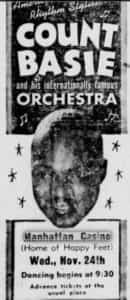 For 25 years – between 1939 and 1964 – the Manhattan Casino was where Black artists, whether they played jazz, blues, swing, rhythm ‘n’ blues, rock ‘n’ roll or something between the cracks, could always find a sympathetic crowd. A welcoming audience, grateful for the entertainment and the fellowship, where it wasn’t likely there’d be somebody trying to use dynamite to scare, intimidate or wipe them from the face of the earth.
For 25 years – between 1939 and 1964 – the Manhattan Casino was where Black artists, whether they played jazz, blues, swing, rhythm ‘n’ blues, rock ‘n’ roll or something between the cracks, could always find a sympathetic crowd. A welcoming audience, grateful for the entertainment and the fellowship, where it wasn’t likely there’d be somebody trying to use dynamite to scare, intimidate or wipe them from the face of the earth.
Many of the greatest names in music – Black or otherwise – “just blew their horns” at the Manhattan: Ella Fitzgerald, Count Basie, James Brown, B.B. King, Ray Charles, Etta James, Otis Redding, Dinah Washington, Sam Cooke, Little Richard, Bo Diddley, the Coasters, Jimmy Reed, Sister Rosetta Tharpe … it is a more-than-impressive list (see below).
For years I played night clubs, working the Chitlin’ Circuit. These clubs were very small, very tight, very crowded and very loud. Everything was loud but the entertainment. The only way to establish communication was by telling a story that would lead into the song, that would catch people’s attention.
Lou Rawls/Los Angeles Times, Jan. 8, 1967
Built in 1926 by pioneering St. Pete developer Elder Jordan, the Manhattan was conceived as a community center for the historically Black neighborhood known as The Deuces, near where 22nd Street South meets 5th Avenue South.
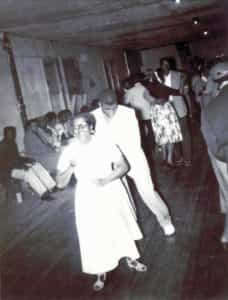
Photo courtesy of Paul Barco/St. Petersburg Museum of History
The dance hall occupied the entire second floor of Jordan’s 12,000-square-foot building. It was a spacious open room, with a stage three feet off the ground, a polished hardwood dance floor and wooden benches against the opposite walls.
Here, Gibbs High School – which did not have an auditorium or meeting space of its own until the mid 1940s – held its proms, sock hops and graduation ceremonies. Church socials took place there. There were beauty pageants and “baby shows.” Ladies’ teas and fashion parades. The Manhattan was where people came together for social gatherings, meetings, holiday parties and celebrations … and regularly scheduled dances.
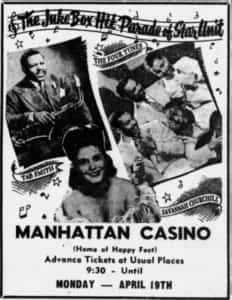 “Twenty-second,” recalls Ron Gregg, 74, “was like Broadway in New York for African Americans here. Because it was the only place we could go for entertainment.”
“Twenty-second,” recalls Ron Gregg, 74, “was like Broadway in New York for African Americans here. Because it was the only place we could go for entertainment.”
Sundays were reserved for gospel performances. Goldie Thompson, disc jockey for a Tampa religious station and an ambitious, smooth-talking promoter, brought in singing groups from around the country for good-natured “competitions.”
In the 1940s and ‘50s, when Thompson’s gospel shows were at their zenith, the touring groups included, among others, The Dixie Hummingbirds, The Five Blind Boys of Alabama (later known as The Happyland Singers), The Fairfield Four, The Five Blind Boys of Jackson, Miss., The Kings of Harmony, The Reliable Jubilee Singers, The Swan Silvertone Singers, The Skylarks of Nashville, The Spirit of Memphis and the CBC Trumpeteers.
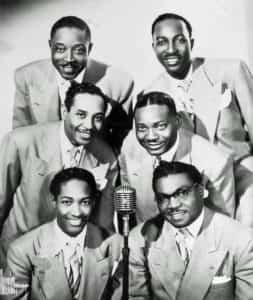
The Soul Stirrers debuted at the Manhattan Casino in 1950, and returned annually until lead singer Sam Cooke (lower left) departed for a secular solo career.
On March 19, 1950 the Soul Stirrers, from Chicago, made their Manhattan Casino debut. The group’s lead singer, new that year, was 19-year-old Sam Cooke. The Soul Stirrers made annual appearances until 1956, when Cooke departed for a solo career.
The “national” popular music shows began in 1939, with the St. Pete debut of 22-year-old Ella Fitzgerald and her band.
The casino – which, pointedly, was not a gambling establishment and did not sell alcohol – was often jammed. Those too young to get in, or who couldn’t afford the admission, sat and stood in the parking across the street, listening to the music coming through the upstairs jalousie windows. Many listened from their cars.
Most weekends, and other nights that offered the opportunity for dancing, promoter George Grogan put local jazz and swing groups onstage, including A.C. Jones and the Atomic Aces, and – in the ‘60s – Al Williams & the Versatiles.
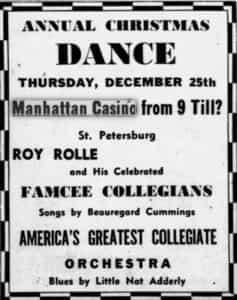 Grogan taught chemistry at Gibbs High, and managed the Jordan Park neighborhood (named for Elder Jordan, who built the Manhattan Casino). He also had connections in the New York talent agencies. “We plan to bring the best possible entertainment throughout the year,” Grogan told the Times in 1956. “By visiting booking offices personally in early October, we’re able to get dates before the best ones are taken. People here prefer Friday night dances, and as nearly as possible we’re going to give them those play dates.”
Grogan taught chemistry at Gibbs High, and managed the Jordan Park neighborhood (named for Elder Jordan, who built the Manhattan Casino). He also had connections in the New York talent agencies. “We plan to bring the best possible entertainment throughout the year,” Grogan told the Times in 1956. “By visiting booking offices personally in early October, we’re able to get dates before the best ones are taken. People here prefer Friday night dances, and as nearly as possible we’re going to give them those play dates.”
The Manzy Harris Orchestra (from Tampa) and Buddy Johnson Orchestra (from New York) were frequent guests, as well. Pre-World War II, the house band was Fess Clark and His Swingsters; St. Petersburg’s George Cooper and orchestra later had the honors, gigging regularly every Monday night.
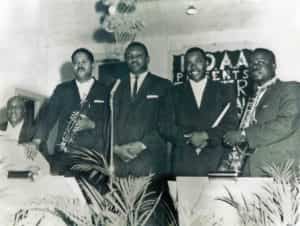
House band, date unknown: From left: Fess Clark, Al Williams, George Brown, Warren Rainey and Leroy Barton. St. Petersbug Museum of History, from the Al Williams Collection
Depending on the visiting artist, these groups would back the headliners during their shows, and play dance music during intermission.

Ray Charles
(Manzy Harris was an important figure in the life and career of Ray Charles, who performed at the Manhattan numerous times in the 1950s.)
Because “white” hotels in the city refused to rent rooms to Blacks, Grohan and the other promoters arranged for the performers to bunk in rooming houses near The Deuces, or in private homes; some families were only too glad to help out.
“That was the only places musicians could stay,” says Ron Gregg, a jazz drummer who’s heard all the stories, many of them firsthand.
Gregg was a youngster during the mid-50s heyday of the Manhattan Casino, but he has very vivid memories of his own: “I would see the musicians’ buses roll in. They would come into town, and a lot of them would have their jackets over their arms, wearing white shirts, and their black bow ties attached to their collars. Walking up and down the street, trying to find someplace to eat and relax until they had to play that night. And I said to myself ‘They must be musicians.’”
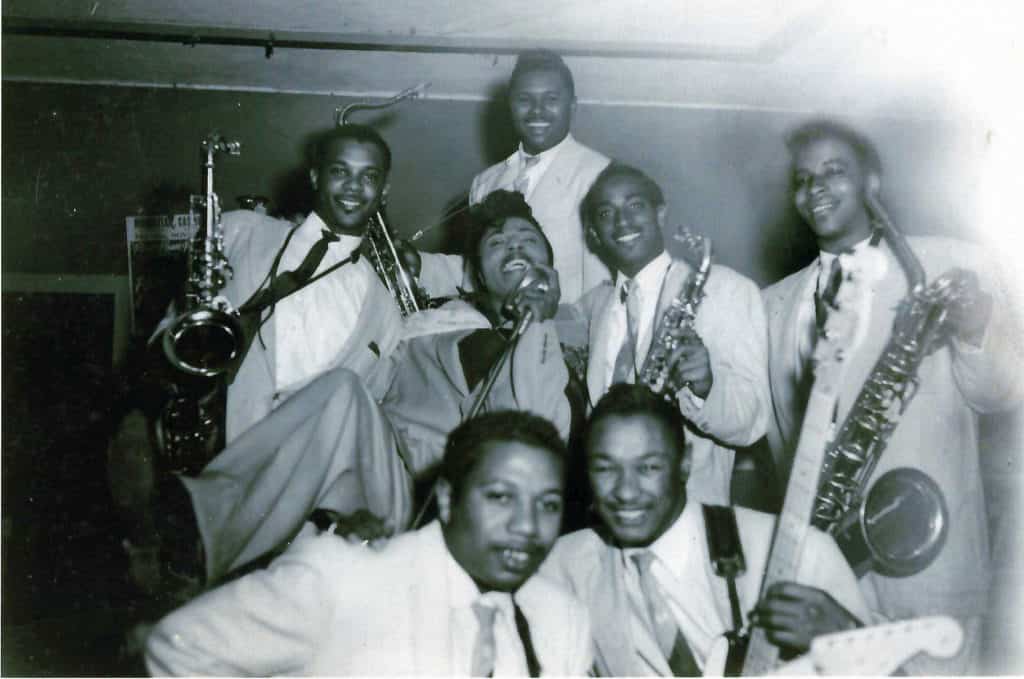
Nov. 26, 1956: Little Richard (center) and band at the Manhattan Casino. Photo courtesy Minson R. Rubin/St. Petersburg Museum of History
The morning after the show, the musicians – well-rested and (ideally) well-fed – would load up their instruments, climb back into the bus, or whatever cars they’d come in, and head for the next stop on the circuit – Tampa, most likely, or Gainesville. Or Jacksonville.

B.B. King
Time – the way it will – did a number on the Manhattan. The very last “major” concert, in 1964, starred B.B. King, who’d been a consistent draw there since the early ’50s. The Civil Rights Act made sweeping changes in the way people of color were treated in the United States, and although it wasn’t a smooth transition (particularly in the South), the Chitlin’ Circuit itself faded into memory.
By 1968, the Casino was well past its prime, as other venues, most with air conditioning, drew paying customers away from what was, admittedly, a neighborhood in decline. With little fanfare, it closed, and remained that way for 18 years. St. Petersburg’s city council gave it historic landmark designation in 1994, and the two-story building – 12,000 square feet in total – was purchased by the City in 2002.
Now known as The Historic Manhattan Casino, the dance hall has been extensively remodeled, and at this writing is in transition yet again – the City recently approved a new concept by its lessee, the Callaloo Restaurant Group, for an expanded “food hall” with several dining options, along with a small-business incubator operated by Rising Tide Innovation Center.
The Manhattan Casino, and the Deuces neighborhood, are part of the city’s South St. Petersburg Community Redevelopment Area. There continue to be heated discussions, both privately and in public, about just what constitutes “restoration” and “revitalization.”
But if those walls could talk …
The shows
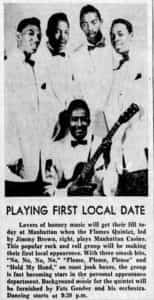
James Brown’s first appearance, 1956. He would return, as the star of the show, in ’58.
What follows is a curated list of the national, touring performers who appeared onstage at the Manhattan Casino between 1939 and 1964. The list was compiled from the archives of the St. Petersburg Times: stories, show listings and advertisements. The list is by no means complete; it does not include local concerts, dances or other social events, not does it include the many, many gospel shows produced by Goldie Thompson.
Note: A local legend persists that Duke Ellington was among the music icons who performed at the Manhattan Casino. While it is documented that Ellington and orchestra performed at the (very white) St. Petersburg Coliseum on three occasions – in 1937 (during his very first Florida swing), 1955 and 1956, there is no record of a stop at the Manhattan. The website dukeellington.org.uk includes an obsessive day-by-day accounting of Ellington’s touring schedule, and a Manhattan date does not appear anywhere in the archives (listings or advertisements) of the Times.
Numerous musicians from Ellington bands did perform at the Manhattan over the years, including trombonist Buster Cooper, a St. Pete native. It is conceivable that Ellington did perform, unannounced, either on an “off” night in the bay area – before or after a show in Tampa – or as a guest, sitting in with musicians he knew.
Additional St. Pete urban legends: George Grogan promoted an Ike & Tina Turner Revue show Feb. 7, 1962 at the Melrose Park Clubhouse in St. Petersburg. There is no record of the Turners playing the Manhattan Casino.
Nat “King” Cole and Sarah Vaughan sang, on a bill with white jazz bandleader Stan Kenton, at the Fort Homer Hesterly Armory in Tampa Nov. 22, 1953. There is no record of either Cole or Vaughan appearing at the Manhattan Casino.
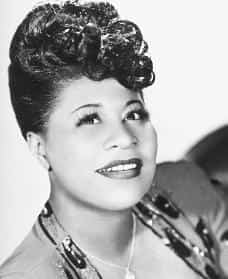
Ella Fitzgerald
1939
Dec. 4 Ella Fitzgerald (“Talk of the Swing World”)
1940
March 21 Ink Spots
April 1 Fats Waller
Oct. 11 Coleman Hawkins, Al Cooper’s Savoy Sultans
Dec. 9: Louis Armstrong
1941
Feb. 6 International Sweethearts of Rhythm (all-girl orchestra)
April 9 Andy Kirk and His Clouds of Joy
1943
Jan. 31 Lil Green, Tiny Bradshaw
April 5 Barney Johnson Orchestra and Brown Skin Models

Wynonie Harris
1944
Jan. 4 Snookum Russell & His Orchestra
Feb. 14 Eddie Durham’s All-Girl Orchestra
March 8 Marva Louis (singing wife of prizefighter Joe Louis), with Nat Towles and His Orchestra
June 5 Lil Green, Delta River Boys, Luis Russell
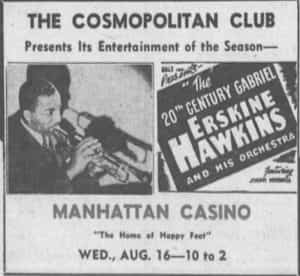 Aug. 16 Erskine Hawkins & His Tuxedo Junction Orchestra
Aug. 16 Erskine Hawkins & His Tuxedo Junction Orchestra
Aug. 28 Lucky Millinder (featuring Judy Carroll and Trevor Bacon), Wynonie Harris
Nov. 8 Cootie Williams, Eddie Vinson
1945
Jan. 31 International Sweethearts of Rhythm (all-girl orchestra)
Feb. 21 Oran “Hot Lips” Page & His Orchestra
March 14 Louis Jordan and His Tympani Five
March 29 Fletcher Henderson
Aug. 9 Sister Rosetta Tharpe with Lucky Millinder (featuring Judy Carroll and Trevor Bacon), Wynonie Harris
1946
Jan. 17 Erskine Hawkins & His Tuxedo Junction Orchestra
March 19 Louis Armstrong
April 9 Eddie “Cleanhead” Vinson
April 28 Joe Liggins & His Honeydrippers Orchestra
1947
April 27 Jimmie Lunceford & His Orchestra
Nov. 16 Charlie Brontley and His Honey Dippers Orchestra
1948
May 9 Golden Gate Quartette
May 31: Erskine Hawkins & His Tuxedo Junction Orchestra Featuring Jimmy Mitchell
Aug. 6 Jimmie Lunceford Orchestra with Joe Thomas, Eddie Wilcox
Sept. 15 Lonnie Johnson
Oct. 18 Ella Johnson and Arthur Prysock with the Buddy Johnson Orchestra
Nov. 4 Louis Jordan & His Tympani Five
Dec. 31 Vi Burnside & the International Sweethearts of Rhythm
1949
March 6 Sister Rosetta Tharpe and Marie Knight (“The singing sweethearts of stage, screen and radio”)
March 26 Roy Brown, Chubby Newsom
May 6 Joe Liggins & His Honeydrippers Orchestra
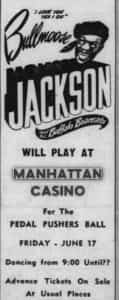 June 17 Bullmoose Jackson and His Buffalo Bearcats
June 17 Bullmoose Jackson and His Buffalo Bearcats
Oct. 30 Marie Knight with Vivian Cooper
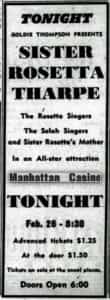 1950
1950
Feb. 25 Marie Knight with Vivian Cooper
Feb. 26 Sister Rosetta Tharpe
March 19 Soul Stirrers (first of six annual appearances)
1951
Jan 26 “Battle of the Saxaphones” (sic) with Bullmoose Jackson, Frank Cully
Aug. 31 Bullmoose Jackson and His Buffalo Bearcats
Sept. 24 Cab Calloway (this band included Cozy Cole, Chu Berry and Dizzy Gillespie)
Dec. 6 Dinah Washington (“Queen of the Jook Box”), Earl Bostic
1952
Jan. 25 Eddie “Cleanhead” Vinson
March 5 Johnny Otis Orchestra with Little Esther, Mel Walker and Red Lyte
April 10 Erskine Hawkins
May 11 Marie Knight
May 23 Wynonie Harris, Larry Darnell
Oct. 17 Arthur Prysock, Peppermint Harris, Joan Shaw, Veretta Dillard
Dec. 31 Earl Bostic
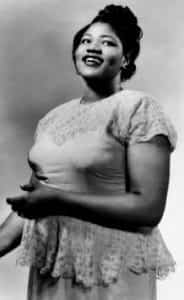
Willie Mae (Big Mama) Thornton
1953
Jan. 30 Johnny Otis, Willie Mae (Big Mama) Thornton, Sally Blair
May 22 Clarence Gatemouth Brown
April 17 Tiny Bradshaw and His Jersey Bounce Orchestra
April 29 Johnny Ace, Willie Mae (Big Mama) Thornton
July 31 B.B. King
Dec. 31 B.B. King
1954
June 25 Charles Brown, Lowell Fulson
Nov. 16 Dinah Washington, Cootie Williams, the Checkers
Nov. 5 Tiny Bradshaw and His Jersey Bounce Orchestra
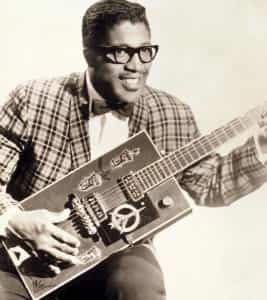
Bo Diddley
1955
Jan. 29 Roy Milton
Sept. 23 Chuck Willis
Aug. 12 Bo Diddley, Jimmy Witherspoon
Dec. 10 Drifters (with Walking Willie & His Swinging Bluesmen, tap dancers Moore and Moore, trumpeter Irving Johnson and “the sexotic dancing of Vida DuSoir”)
May 6 Pee Wee Crayton
July 8 B. B. King
Feb. 11 The Midnighters (with lead vocalist Hank Ballard, who would write “The Twist” in 1959)
Aug. 26 Charles Brown

Big Joe Turner
1956
Jan. 1 B.B. King
April 1 Lloyd Price
June 15 Big Joe Turner
Aug. 3 Drifters
Aug. 10 Willis Jackson, Little Willie John
Aug. 17 Clifton Chernier & the Playboys
Oct. 5 Ray Charles
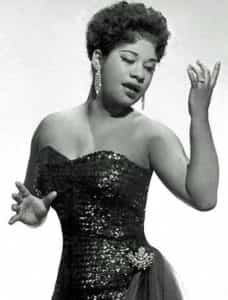
Ruth Brown
Oct. 12 Guitar Slim, Lloyd Lambert
Sept. 3 Ruth Brown
Nov. 2 Ann Cole, Muddy Waters
Nov. 21 LaVern Baker
Nov. 26 Little Richard
Nov. 30 Flames Quintet (with James Brown)
Dec. 7 Chuck Willis
Dec. 14 Midnighters
1957
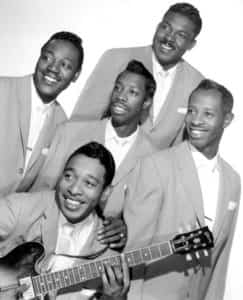
5 Royales
Jan. 11 5 Royales
Jan. 28 Louis Armstrong
Feb. 7 Erskine Hawkins
Feb. 8 Louis Jordan
Feb. 15 Lloyd Price
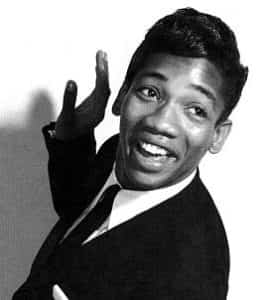
Little Willie John
March 8 Little Willie John
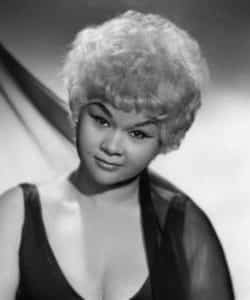
Etta James
March 15 Etta James, Huey P. Smith, Buddy Griffin
March 22 Big Joe Turner
March 29 Robust Roy Brown
May 3 Willie Dixon, Otis Rush
May 31 Ann Cole, Jimmy Rogers
June 7 Bill Doggett
July 5 Ray Charles
July 12 Shirley and Lee
July 26 Wynonie Harris, Big Maybelle
Sept. 13 Little Willie John
Oct. 17 Noble “Thin Man” Watts
Oct. 4 Lloyd Price
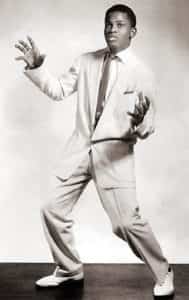
Joe Tex
Oct. 11 Joe Tex, Marie Knight, The Ravens
Nov. 8 Ruth Brown
1958
January 17 Drifters (most likely the post-Clyde McPhatter, pre-Ben E. King Drifters)
January 31 Bill Doggett
Feb. 7 Erskine Hawkins
March 14 Ray Charles
March 21 Silhouettes
March 28 Gene Allison
April 11 Lloyd Price
June 27 Big Joe Turner
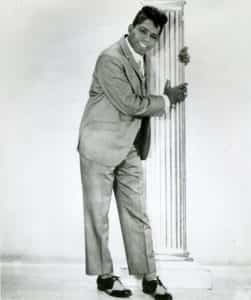
The Godfather of Soul
July 4 James Brown & His Famous Flames
July 25 Shirley and Lee, Fats Domino
Aug. 1 Jimmy Reed
Aug. 29 Little Willie John
Oct. 17 Ruth Brown
Sept. 19 Ray Charles
Oct. 22 B.B. King
Dec. 31 The Pastels
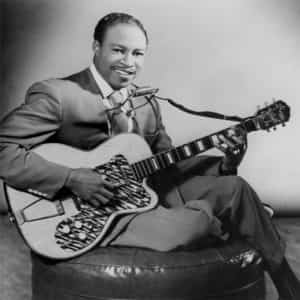
Jimmy Reed
1959
Jan. 16 Jimmy Reed
Jan. 21 Ray Charles
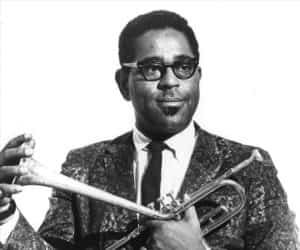
Dizzy Gillespie
Jan. 30 Dizzy Gillespie
Feb 6 The Coasters
March 1 Staple Singers
March 3 Amos Milburn, Charles Brown
April 10 Paul Williams, Ruth Brown
Oct. 30 Jimmy Reed
1960
March 4 Drifters
May 27 Drifters
Sept. 16 Ruth Brown
Nov. 23 Drifters
1961
Feb. 17 Dee Clark
March 24 Bill Doggett
April 28 Ruth Brown
May 9 Jimmy Smith
June 9 Little Willie John
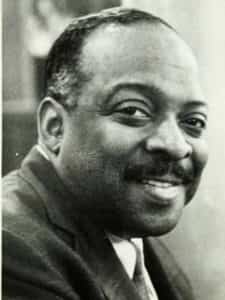
Count Basie
1962
Jan. 8 B.B. King
Jan. 30 Count Basie Orchestra (according to the Times review, 1,000 people attended)
Feb. 19 Texas Ray & the Gene Franklin Orchestra
March 9 Bill Doggett
March 30 5 Royales
Aug. 3 Bobby “Blue” Bland
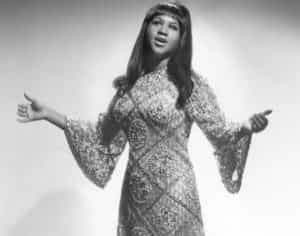
Aretha Franklin
June 29 Bobby Williams & His Orchestra, with featured vocalists Little Tammie John and Aretha Franklin
Nov. 2 Jimmy Smith
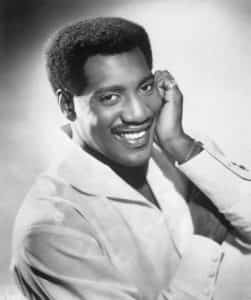
Otis Redding
1963
Jan. 18 Maxine Brown
Feb. 22 Jerry Butler (canceled, as Butler was injured in a car crash while touring in Florida)
March 15 Otis Redding, Carla Thomas, Booker T & the MGs, Jerry McCain
March 22 B.B. King
July 5 Big Joe Henderson
Sept. 15 Little Johnny Taylor
Aug. 16 Bobby “Blue” Bland
Oct. 18 B.B. King
1964
Feb. 14 B.B. King
This story appears in the book Vintage St. Pete: The Golden Age of Tourism – and More (St. Petersburg Press).








Rose Hayes
April 9, 2022at3:01 pm
Please make sure the ‘ Eight Man Collective’ now managing the Manhattan Casino get to see and read this article. It is of the utmost importance.
Chuck Egerter
August 18, 2020at5:19 pm
Great article Bill!
I love the details including performances and dates. You are helping people understand the historical and cultural significance of the Manhattan Casino and what its true future potential can be: The Manhattan Casino can and should become the cornerstone of African American music and culture, leading to the economic revitalization of the Dueces.
We can make 22nd St. South a regional draw while creating needed jobs for so many in the area that have struggled for so long. As you know, there were over 100 African American owned businesses along 22nd Street between 5th Ave S and 15th Ave S in the early 60s. Recreating a version of that is the highest calling for the Deuces and for St. Petersburg.
I could stop there, but I have been quiet and patient on this issue for too long. So here’s the part I’m hesitant to put in writing publicly, but tired enough of the BS to say some of what I know for fact:
There is a debate, one that I have been passionately involved with. While I was President of the Deuces Live Mainstreet, the City paid about a half million dollars (about 4 years ago) to develop a master plan for both the Deuces and the Warehouse Arts District. Both WADA and the Deuces, as well as the community at large participated in developing that plan. For it to work, it needs the Manhattan Casino to play a foundational role in the economic revitalization of 22nd St S., built around its cultural legacy. Yet, the city gave a ridiculously inexpensive lease to the Callaloo group one year later (2017) even though their mission was not consistent with the City’s own Master Plan. The city passed on a strong proposal by another group, The Manhattan Casino Legacy Collaborative (MCLC), a non-profit formed with the sole purpose of making the Manhattan Casino live up to its cultural potential with musical and artistic programming built around the performers, stories, and surrounding restaurants of its past. That was an ill-advised mistake that has played out over the last 2 years, as evidenced by the lack of progress and/or success in the Manhattan Casino.
If we are doing anything other than pursuing a legacy and culture based mission that embraces and builds on the legend of its past, we are not only ignoring the City’s half Million dollar master plan, but we are kidding ourselves about the Manhattan Casino’s ability to spark economic revitalization throughout the Deuces.
Callaloo’s business model started with a 4 page unsolicited proposal for a Floribbean restaurant and event space. It had no mention of culture events and programming other than to possibly house art from one of the original Florida Highwayman. When the MCLC saw that this wasteful proposal was close to being accepted by the City, it scrambled to put a proposal together of its own. This competition caused Callaloo to submit a revised proposal, with newly added members and plans. The city helped facilitate this and awarded the lease to Callaloo against strong community opposition.
In the end, to the City’s credit, the lease Callaloo signed in November of 2017 had many cultural and community requirements. Requirements that had still not been met a year before COVID hit in March.
Nothing that Callaloo has done has helped the community, even with the cheapest commercial lease I have ever heard of: $3,500/mo for over 15,000 sq ft. That’s less than $3/ft. Do some research and this will blow your mind.
So why last week, after clear failure and violation of the existing lease provisions, would the City propose to Council (and council approve) and amendment to the lease that keeps that same people involved and cuts them even more slack? The city has made the same mistake working with some of the same people across the street at the other eye sore on the block, Commerce Park.
As a community, and as a city, should we just admit that we really don’t care about the Deuces or the cultural legacy it offers to all of our futures? Or are we finally ready to do the right thing?
Its a good debate, one that I can’t believe we are even having.
While its easy to throw rocks, it doesn’t solve the problem. If version 2 of Callaloo doesn’t honor the terms of the original lease, what have we gained?
But… when the time is right, and the City is finally ready, we will still have a great and growing team that is ready to make a difference for the right reasons.
Sara Fludd
August 17, 2020at3:13 pm
I wouldn’t call this photo “largely unsegregated.”